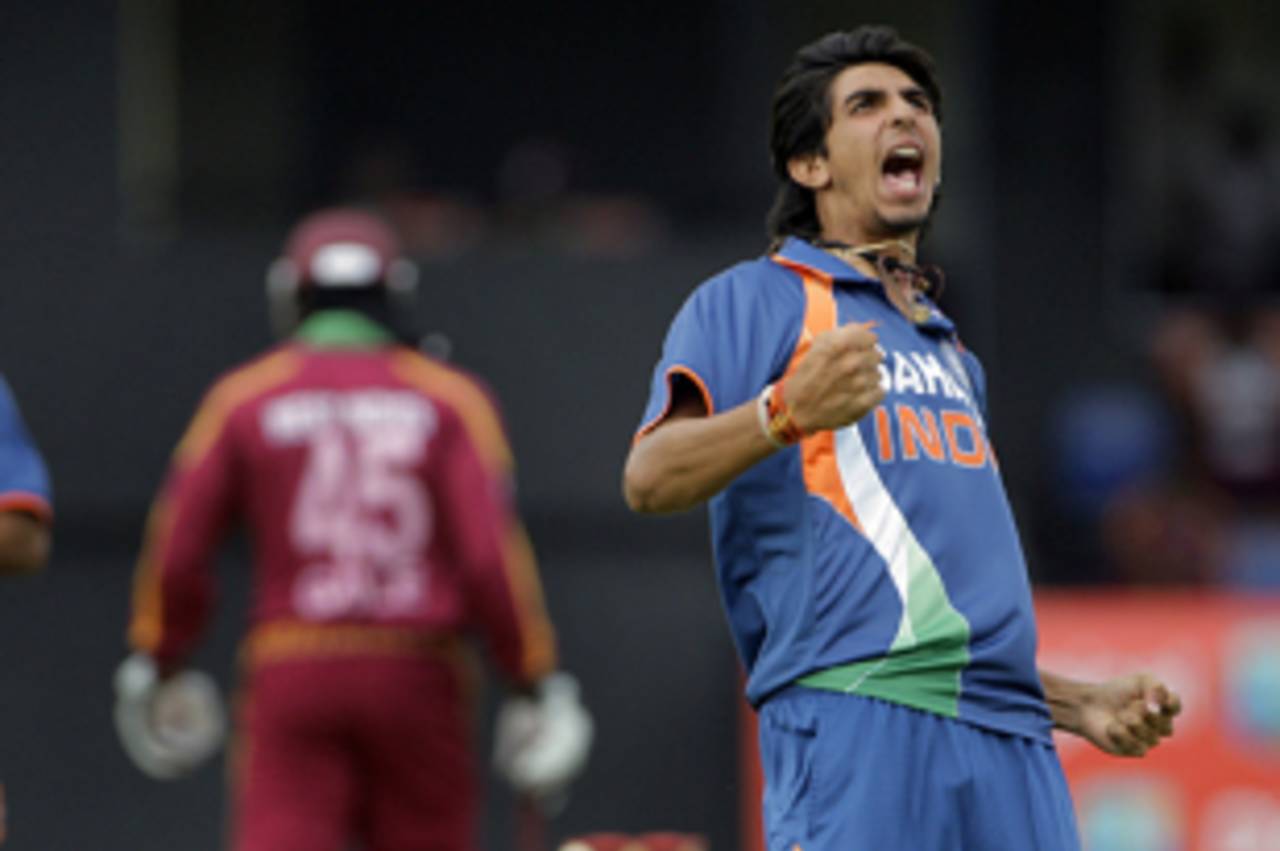The
18 months from June 2007 to the end of last year was an excellent time to be Ishant Sharma - the wickets and accolades were coming thick and fast, and his stature as an international cricketer grew as quickly as his fan following did. The year 2009 hasn't been as kind, though: the pace has dropped, as has the confidence, seemingly, and the ball has been sprayed around far too often for the captain's liking. Ishant is still taking wickets -
22 from 15 ODIs this year - but he isn't giving the team the kind of confidence he used to with his control.
Just how far has Ishant's performance dropped in ODIs in 2009? The overall numbers, interestingly, suggest only a marginal decline: in his first 20 matches he took 27 wickets at an average of 31.48 and an economy-rate of 5.34. In his 15 ODIs this year, the wickets have actually come at a slightly quicker rate and a marginally better average, but the economy-rate has dropped off to 6.16. If you were to ignore everything else and just look at the overall stats, you'd wonder what the fuss was all about.
Dig a little deeper, though, and some worrying signs emerge. In the first 18 months of his career, Ishant specialised in dismissing top-order batsmen early in the innings in ODIs, thus giving India an attacking option in the first 20 overs, and making it easier for the spinners to exercise control during the middle overs. In 104 overs that Ishant bowled between overs 1 and 20 in an innings in that period, he took 18 wickets - an average of a wicket every 35 deliveries. The CB Series match
against Australia in Melbourne early last year was a perfect example of the firepower he added in the team - after Australia had won the toss and opted to bat, Ishant removed Matthew Hayden, Ricky Ponting and Andrew Symonds, blows Australia couldn't recover from. They were bundled out for 159, and Ishant won his first Man-of-the-Match award in ODIs.
His disconcerting pace and lift troubled even the top-class batsmen, and his effectiveness early in the innings more than made up for the fact that he wasn't as lethal during the last few overs. Of the 27 wickets he took in his first 20 matches, two-thirds came in the first 20 overs of opposition innings.
In 2009, though, the break-up of Ishant's ODI wickets are a complete contrast. In the 64 overs he has bowled in the first 20 overs of the innings, he has only taken five wickets, each costing him more than 75 runs. The strike-rate has dropped from 35 to almost 77 deliveries per wicket, while the economy rate has risen to almost one run per ball. The lack of effectiveness early has put more pressure on other bowlers to take wickets with the new ball, while also giving the spinners less of a cushion to work with, due to the lack of new-ball wickets.
Most of Ishant's ODI wickets in 2009 have coming during the slog overs, when batsmen are usually looking out for quick runs: 12 out of 22 wickets have come during this period, while the percentage of wickets taken in the first 20 has dropped from 66 to a paltry 23.
His numbers in 2009 make Ishant the most expensive ODI fast bowler this year (among those who've bowled at least 500 balls), and he is also the only one with an economy-rate of more than six. Off 671 balls, he has conceded 86 fours and nine sixes, an average of 7.06 balls per four or six, which is the lowest among all fast bowlers this year - again an indication of his lack of control and an inability to maintain pressure.
Comparing Ishant's numbers with those of other Indian fast bowlers in 2009, there's another factor that comes to the fore - the lack of a regular pace partner for him. India have played
20 ODIs during this period, and Ishant has played 15 of those, the most by an Indian fast bowler. Next in line are Ashish Nehra and Praveen Kumar, with 10 each. Zaheer Khan and RP Singh have only played seven each. The constant changing of the pace line-up, due to injuries or loss of form, hasn't helped the bowlers either.
The numbers for the other bowlers also reveal that most of them have done better than Ishant. Nehra has been among the wickets, with 18 in 10 games, while Praveen is the only one among the lot with an economy-rate of less than five. RP Singh's numbers don't flatter him, though - an average of more than 50 and an economy-rate of almost six.
And here's how Ishant's numbers compared with those of the other Indian fast bowlers from the time he made his debut to the end of 2008: there were three bowlers who had a higher economy-rate, with Sreesanth being the worst. During that period, Ishant conceded a boundary every 9.46 balls, which is 34% better than his current rate.
